Need to know ADU setbacks in San Diego? We believe that ADU requirements and regulations must be easier to understand. SEE here the full list.
If you’re considering building an Accessory Dwelling Unit (ADU) in San Diego, it’s crucial to understand the checklist of requirements and potential setbacks that may arise during the process.
ADUs have gained significant popularity in recent years in San Diego due to their versatility and potential for extra income or multigenerational living.
However, navigating the complex regulations and ensuring compliance can be overwhelming.
I want to show you the essential requirements for ADU construction in San Diego, covering everything from permits and zoning to parking and utility connections.
Based on my experience, I will let you know the potential setbacks you may encounter, such as size limitations, design restrictions, and neighborhood opposition.
So, whether you’re a homeowner looking to maximize your property’s potential or an investor seeking additional rental income, this guide will equip you with the knowledge and insights needed to successfully overcome the ADU process in San Diego.
What is an Accessory Dwelling Unit (ADU)?
An ADU is essentially a secondary residential unit that exists on the same property as your primary residence.
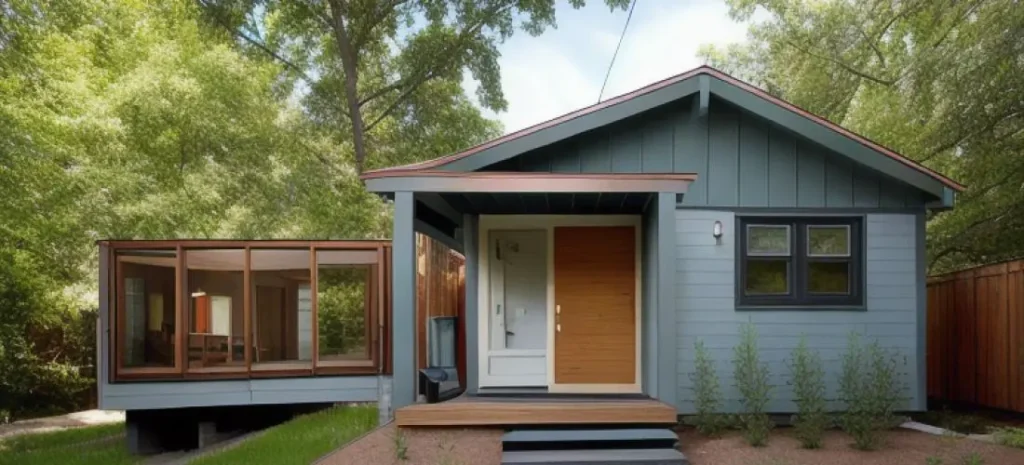
So, what exactly is an Accessory Dwelling Unit (ADU)?
It’s an additional living space that can come in various forms, such as a converted garage, a detached structure, or even an extension to your existing home.
These units are designed to be self-contained, offering all the essential facilities you would find in a typical home, including living areas, bedrooms, kitchens, and bathrooms.
It is usually used for rental purposes or guest stays.
1 Beauty of ADU in San Diego
Sustainability is no longer a buzzword but a crucial aspect of modern bathroom design. In 2024, designers are focusing on minimizing environmental impact by incorporating eco-friendly materials and water-saving technologies.
From recycled glass tiles to low-flow showerheads and toilets, every element is chosen with an eye toward reducing water usage and promoting recycling.
The push towards sustainability also sees a rise in the use of natural light and biophilic design elements that connect the indoors to the natural world outside, creating spaces that are not only beautiful but also beneficial for the planet and personal well-being.
2 Versatility of ADUs in San Diego
The versatility of ADUs in San Diego allows them to serve various purposes based on your specific needs and circumstances.
They can serve as a comfortable living space for your family members, providing them with independence while remaining close to home.
Alternatively, you may choose to utilize your ADU as a rental unit in San Diego, generating additional income to help offset your expenses. For this to be achieved, follow all ADU setbacks in San Diego written in this list / article.
ADUs can also serve as housing options for caregivers or even employees, allowing them to reside conveniently close to their place of work.
3 In San Diego, ADUs are subject to specific regulations
It’s important to note that in San Diego, ADUs are subject to specific regulations and requirements.
These regulations ensure that ADUs comply with local zoning and building codes, maintaining the integrity and safety of the neighborhood.
So, if you’re considering adding an ADU to your property in San Diego, it’s crucial to familiarize yourself with these regulations to ensure a smooth and successful construction process.
4 Cover aspects such as setback requirements
By adhering to San Diego’s ADU regulations, you can rest assured that your new living space will meet the necessary standards and contribute positively to the housing landscape of the city.
These regulations cover aspects such as setback requirements, size limitations, and other design considerations that are aimed at maintaining the harmony and functionality of the neighborhood.
5 Want to see more of ADU Setbacks in San Diego? Let’s dive deeper…
In the upcoming sections, we’ll dive deeper into the ADU specific setback regulations in San Diego, exploring how they may impact the design and construction of your ADU.
We’ll also discuss potential strategies to navigate these setbacks effectively, providing you with the knowledge and insights to make informed decisions about your project.
SO, the ADU is …
Whether you’re looking to accommodate family members, generate rental income, or create an additional living space for your specific needs, ADUs offer an exciting opportunity to enhance your property’s potential.
Stay with us as we delve into the intricacies of ADU setbacks in San Diego and uncover valuable tips to help you unlock the full benefits of this housing innovation.
Benefits of building an ADU in San Diego
Building an ADU in San Diego comes with a wide range of benefits that can make a significant impact on homeowners and investors.

Let’s explore some of these advantages together.
1 ADUs provide an incredible opportunity to generate additional income.
Whether you opt for long-term rentals or short-term vacation rentals, there is a growing demand for housing in San Diego.
This means that your ADU can become a lucrative investment, helping you to maximize your property’s earning potential.
2 2. Accommodate family members in ADU
It’s not just about the financial gains. ADUs also offer a flexible living arrangement that can greatly benefit homeowners.
You can use an ADU to accommodate family members, creating a separate and comfortable space for them to reside while maintaining privacy for both parties.
It’s also an excellent option for hosting guests, giving them their own cozy haven without intruding on your main living area.
3 ADU rise the property’s value
One exciting aspect to consider is the impact on your property’s value.
By adding an ADU, you’re not only expanding your living space but also enhancing the marketability of your property.
With the increasing trend towards multi-generational living, ADUs have become highly desirable for potential buyers.
But before starting the construction, you need to fulfill the ADU setbacks in San Diego list.
So, investing in an ADU can not only improve your daily life but also boost your property’s resale value in the long run.
4 Use of space
In addition to the personal benefits, building an ADU aligns with sustainable living practices.
San Diego, like many cities, faces a housing shortage, and ADUs provide a solution without contributing to urban sprawl.
By utilizing existing resources and infrastructure, ADUs help make the most efficient use of space, ultimately addressing the housing shortage in a responsible manner.
This means you can contribute to the community and minimize the environmental impact at the same time.
Benefits conclusion
So, whether you’re looking for a supplementary income stream, seeking a flexible living arrangement, aiming to increase your property’s value, or desiring to promote sustainability, building an ADU in San Diego offers an array of advantages.
It’s a smart and forward-thinking choice that can truly transform your property and enhance your lifestyle in more ways than one.
ADU Setbacks in San Diego: List
BEFORE COUNTY STANDARD ACCESSORY DWELLING UNIT PLANS WILL BE ACCEPTED FOR PLAN CHECK, ALL OF THE INFORMATION BELOW MUST BE PROVIDED ON PLANS. ALL PLANS MUST BE PROVIDED ON MINIMUM 11×17 PAGES.
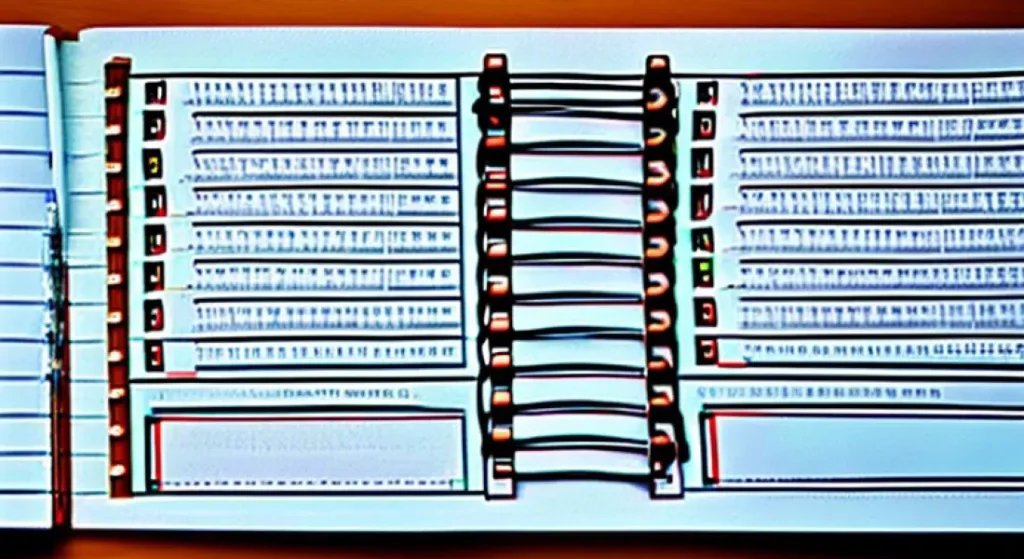
SHEET SP-1
- PROVIDE PLOT PLAN (SEE PDS 090 FOR GUIDANCE)
- PROVIDE VICINITY MAP
- COMPLETE OWNER INFORMATION
- COMPLETE CONTACT INFORMATION
- COMPLETE PARCEL INFORMATION
- COMPLETE PROJECT SCOPE
- SPECIFY PERVIOUS AREA INFORMATION AS COORDINATED WITH PLOT PLAN
- SPECIFY IMPERVIOUS AREA INFORMATION AS COORDINATED WITH PLOT PLAN AND STORM WATER INTAKE FORM
- SPECIFY LAND DISTURBANCE QUANTITY AS COORDINATED WITH STORM WATER INTAKE FORM
- PROVIDE BMP PLAN PER THE STORM WATER QUALITY MANAGEMENT PLAN (SWQMP)
- SPECIFY ENERGY EFFICIENCY SPECIAL FEATURES AS COORDINATED WITH ENERGY CALCULATIONS
- SPECIFY ENERGY EFFICIENCY HERS VERIFICATION AS COORDINATED WITH ENERGY CALCULATIONS
SHEET A3
- SPECIFY ROOFING INFORMATION
- SPECIFY EXTERIOR WALL FINISH
- SPECIFY ATTIC VENTS
SHEET A5
- SPECIFY TRUSS IDENTIFICATION NUMBERS AS COORDINATED WITH TRUSS CALCULATIONS
SHEET A6
- SPECIFY WALL INSULATION AS COORDINATED WITH ENERGY CALCULATIONS
- SPECIFY CEILING/ROOF INSULATION AS COORDINATED WITH ENERGY CALCULATIONS
- SPECIFY IF CLIMATE ZONE 14 PROJECT AS COORDINATED WITH ENERGY CALCULATIONS
ADDITIONAL REQUIREMENTS (MAY BE AFTER PLAN SUBMITTAL)
- PROVIDE ENERGY CALCULATIONS (T-24)
- CALL FOR SITE INSPECTION
- PROVIDE STORM WATER INTAKE FORM
- PROVIDE STORM WATER QUALITY MANAGEMENT PLAN (SWQMP)
- PROVIDE TRUSS CALCULATIONS & COORDINATE WITH TRUSS IDENTIFICATION NUMBERS
- OBTAIN FIRE DISTRICT APPROVAL
- OBTAIN A RECORD ID WITH A BUILDING TECHNICIAN AND SATISFY ALL CONDITIONS SPECIFIC TO YOUR PROJECT
Understanding setback requirements for ADUs in San Diego
When designing and constructing your ADU in San Diego, setbacks are a crucial factor to consider. See the requirements bellow.

In San Diego, setbacks refer to the minimum distance that your ADU must be set back from property lines, roads, or other existing structures.
These ADU setback requirements in San Diego are in place to ensure safety, maintain privacy, and preserve the overall visual appeal of the neighborhood.
Understanding and adhering to setback regulations is essential, as they can significantly impact the size, location, and layout of your ADU.
In San Diego, setback requirements for ADUs are determined by the zoning of your property.
It’s important to know the specific zoning designation of your property to accurately determine the setback requirements that apply to you.
For instance, based on my experience, in single-family residential zones, the front setback requirement is typically around 20 feet.
This means that your ADU must be positioned a minimum of 20 feet away from the front property line.
However, it’s important to note that setback requirements in San Diego can vary depending on the size of your lot and the specific zoning of your property.
Setbacks for the rear side
Additionally, ADU setbacks in San Diego for the rear and side of your property may also come into play.
The specific setback distances for the rear and side can vary based on factors such as lot size, zoning regulations, and any unique circumstances that may apply to your property.
It’s crucial to consult the specific setback requirements for your property to ensure compliance with the San Diego regulations.
Get a free estimate from us (Sheiner Construction)
You can get a free estimate from us, and if you want to continue, we will guide you through each element of the law.
We know the ADU setback requirements in San Diego and ensure that your Accessory Dwelling Units is positioned appropriately on your property.
This not only contributes to the safety and privacy of your living space but also ensures that your ADU aligns with the visual harmony of the neighborhood.
When we are designing your ADU, it’s essential to consider setback requirements from the early stages of your planning process.
These requirements will impact the overall footprint and placement of your ADU, as well as the potential for future expansions or modifications.
Working with an experienced contractor like Sheiner Construction San Diego, can be invaluable in navigating setback regulations and optimizing your ADU’s design within the defined parameters.
Understanding ADU setbacks in San Diego in less words
By considering setback requirements and integrating them into your ADU design, you’ll not only ensure compliance with local regulations but also contribute to the harmonious development of your property and the surrounding community.
How setbacks affect ADU design and construction in San Diego
ADU setbacks in San Diego play a vital role in the design and construction, as they have a significant impact on various aspects of your accessory dwelling unit.
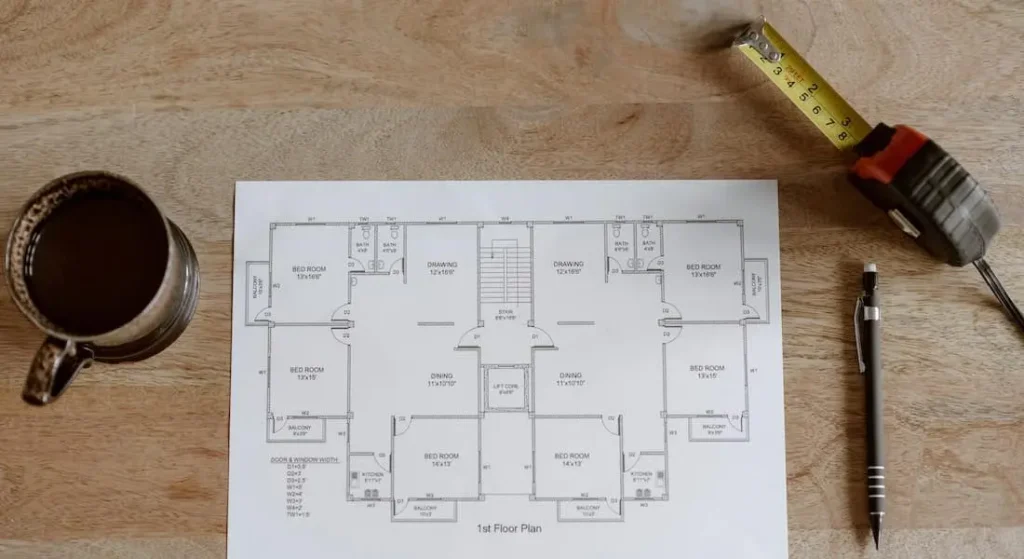
They dictate the amount of available space you have for your ADU and can influence its size, shape, and placement on your property.
It’s important to understand how setbacks can affect your ADU design in San Diego, to ensure compliance and create a functional and appealing living space.
Setbacks limitations
In my experience, the setback requirements may impose limitations on the size of your ADU.
If your property has a small rear setback, it could restrict the footprint or overall square footage of your unit.
In such cases, you may need to consider specific design modifications to meet the setback requirement while still achieving your desired living space.
At Sheiner Construction, we always speak openly with our clients about any requirement. We do not like surprises, and I am sure that neither do you, especially when it is about an ADU.
Orientation and privacy of your ADU
Additionally, setbacks can affect the orientation and privacy of your ADU.
If your property has a significant setback from the road, it may offer enhanced privacy for your unit.
However, it’s essential to consider how this setback could impact the accessibility and visibility of your ADU.
Finding the right balance between privacy and accessibility is key to ensuring a comfortable living experience for residents.
It is highly recommended to collaborate with an ADU contractor in San Diego, or at least a general builder
When embarking on your ADU project, it’s highly recommended to collaborate with ADU contractor who has experience working with setback requirements in San Diego.
They possess the expertise and knowledge to navigate the local regulations and help you optimize the design of your ADU within the defined setback limitations.
Choose wisely with who you’ll collaborate, as this is not an easy choice.
An ADU contractor in San Diego can provide valuable insights and creative solutions
An experienced professional ADU contractor in San Diego can provide valuable insights and creative solutions to make the most of the available space while adhering to setback requirements.
They (or we) can help you explore design options, such as maximizing the vertical space or reconfiguring the layout, to optimize the functionality and aesthetics of your ADU.
Carefully considering ADU setbacks in San Diego
By carefully considering setbacks during the design process, you can ensure that your ADU meets all the necessary requirements while maximizing its potential.
A contractor can assist you in creating a well-designed ADU that not only complies with setback regulations but also provides a comfortable and attractive living space for its occupants.
Remember, setbacks are not merely regulatory constraints; they offer an opportunity to create a harmonious relationship between your ADU and the surrounding environment.
By working with reputable contractors in San Diego and considering setback requirements from the early stages of your ADU project, you can achieve a successful design and construction process that aligns with both your vision and the regulations.
Common setbacks for ADUs in San Diego
Setbacks for ADUs in San Diego have common requirements that most projects need to adhere to.
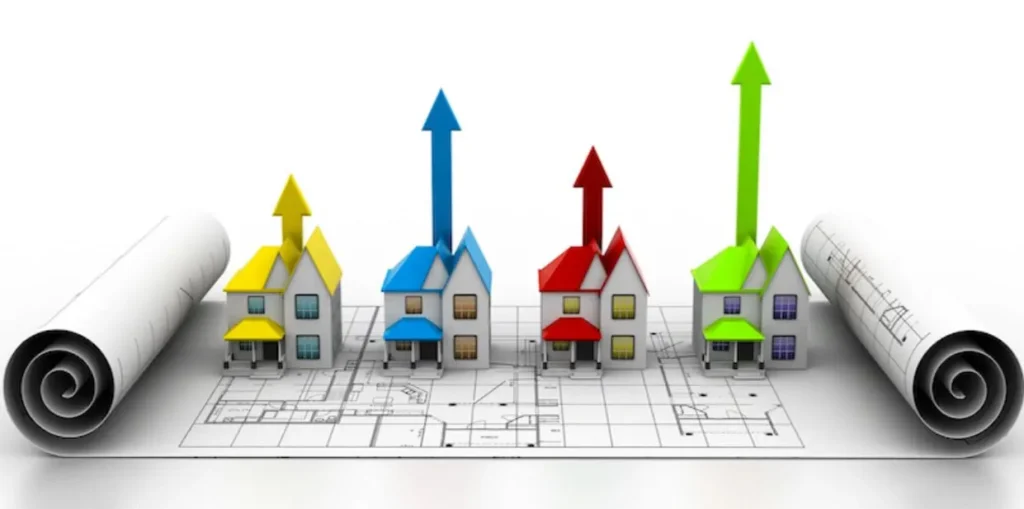
While setback regulations can vary based on factors such as zoning and lot size, there are three main types of setbacks you’ll typically encounter: front setbacks, side setbacks, and rear setbacks.
Understanding these setbacks is key to ensuring compliance and a successful ADU project.
Front ADU Setback in San Diego
The front ADU setback in San Diego is the distance between the front property line and the front of your Accessory Dwelling Unit.
It is typically the largest setback requirement and is designed to maintain a consistent setback line along the street.
The purpose of this setback is to create a visually appealing streetscape and provide a sense of uniformity within the neighborhood.
Side ADU Setback in San Diego
Side ADU setbacks in San Diego refer to the distance between the Accessory Dwelling Unit and the side property lines.
These ADU setbacks ensure sufficient space between neighboring structures, promoting privacy and minimizing potential issues related to intrusion and overshadowing.
The specific side setback requirements may vary depending on the zoning of your property.
Rear ADU Setback in San Diego
On the other hand, rear ADU setbacks in San Diego determine the distance between the Accessory Dwelling Unit and the rear property line.
These ADU setbacks are essential for creating open space at the back of the property and preventing overcrowding of structures.
Rear setbacks help maintain a balance between built structures and green spaces, contributing to a pleasant and functional living environment.
Specific setback requirements
It’s important to note that the specific ADU setback requirements will depend on the zoning designation of your property.
To determine the exact setback requirements that apply to your project, it’s crucial to consult the city’s Municipal Code or seek guidance from a contractor, experienced in ADU construction in San Diego.
In less words for common ADU setbacks in San Diego
Common setbacks are an integral part of ADU design and construction, influencing factors such as the size, placement, and overall layout of your unit.
I tell you this: by carefully considering and adhering to setback requirements, you can create a well-designed and compliant ADU that enhances both your property and the surrounding community of San Diego.
Tips for ADU setback requirements in San Diego
It can be challenging to build an ADU in San Diego, I know, but with the right approach, you can ensure compliance and a smooth construction process.

Here are some helpful tips to help you navigate setback requirements effectively:
Research San Diego ADU regulations
Take the time to familiarize yourself with the setback requirements outlined in the city’s Municipal Code.
This will give you a solid understanding of the specific setback dimensions for your property’s zoning, including front, side, and rear setbacks.
Being well-informed about the regulations is the first step towards compliance.
Consult an ADU contractor in San Diego, such as Sheiner Construction
Engaging the services of a contractor who has experience with ADU projects in San Diego is highly beneficial.
They, or we, can provide valuable guidance throughout the design process, ensuring that your ADU meets setback requirements while maximizing its potential.
Their, or our, expertise will help you navigate the intricacies of setback regulations and design a compliant and functional ADU.
Plan your design accordingly
When designing your ADU, consider setback requirements from the beginning.
Take into account the available space and how setbacks may impact the size, shape, and placement of your unit.
Collaborate closely with your contractor to optimize the design within the setback limitations, ensuring your ADU is both compliant and suits your needs.
Seek variances if necessary
In my experience, there are some situations where you may find that your ADU cannot fully comply with the setback requirements.
In such cases, it may be necessary to request a variance from the authorities. You can also read this ACCESSORY DWELLING UNIT HANDBOOK directly from CA gov.
A variance allows for deviations from the standard setback regulations but requires approval from the appropriate authorities.
Consulting with a ADU contractor in San Diego, such as Sheiner Construction, will help you determine if a variance is needed and guide you through the application process.
We are always guide our clients to ensure a smooth project.
Communicate with neighbors
If your ADU design requires a variance or if you anticipate potential opposition due to setbacks, consider engaging in open and transparent communication with your neighbors.
Address their concerns, explain the benefits of your ADU project, and seek their support.
Building positive relationships and fostering understanding can help smoothen the process and create a harmonious neighborhood environment.
Tips for ADU setbacks in San Diego, with less words…
By following these tips and working closely with professionals who understand setback requirements, you’ll be well-equipped to navigate the ADU process in San Diego.
Remember, compliance with setback regulations ensures the successful realization of your ADU project while maintaining the integrity of the community.
The tips are: Research local regulations, consult with a contractor, plan your design accordingly, seek variances if necessary, and communicate with neighbors.
ADU regulations in San Diego
Before you begin your ADU project in San Diego, it’s crucial to familiarize yourself with the local regulations that govern the construction of these units.

In San Diego, the regulations for ADUs are outlined in the city’s Municipal Code, specifically Section 113.0304.
These regulations cover various aspects, including zoning requirements, size limitations, parking, and utility connections.
Understanding and complying with these regulations is vital to ensure that your ADU project proceeds smoothly and remains in compliance with the law.
Zoning for ADU in San Diego – Zoning Setback
ADUs in San Diego are allowed in residential zones, subject to certain conditions.
The size of your ADU will depend on the size of your primary residence and the lot it sits on.
For example, if your lot is smaller than 6,000 square feet, the maximum size of your ADU is 1,200 square feet.
It’s important to note that the maximum size may vary based on the specific zoning of your property and other factors.
San Diego’s zoning laws divide the city into different zones, each with its own set of rules and regulations.
These zones determine what types of buildings are allowed and how properties can be used.
For ADU enthusiasts, understanding your property’s zoning is essential.
Important: in San Diego, ADUs must have a separate entrance and cannot be sold separately from the primary residence.
Let’s say you want to build an Accessory Dwelling Unit, so in order to get started, you will need to know the following:
- ZONING DIVISION
- BUILDING DIVISION
1. The ZONING DIVISION starts by saying: “State Law allows the addition of one Accessory dwelling unit (ADU) and/or one Junior Accessory Dwelling Unit (JADU) to those properties zoned for residential use which provides complete independent living facilities for one or more persons with an existing or proposed single-family dwelling (SFD). Applicants are strongly encouraged to contact the appropriate Fire Department ASAP to ensure the ADU complies with the required fire setbacks and to find out if fire sprinklers are required or not“. Read the full Zoning Division regulation here.
2. BUILDING DIVISION has two regulations:
a) HOW TO OBTAIN A BUILDING PERMIT – The purpose of this guidance document is to help customers better understand the building permit process by summarizing the basic steps. This document is intended as a guide only. Forms referenced in this document contain supplemental information and are available on the County website. (This document does not specifically address code enforcement projects; which will require additional steps. Please consult with your code enforcement officer to discuss the processing of these projects, if applicable.) Building permits may be applied for at the Planning & Development Services (PDS), Building Division: 5510 Overland Ave., Suite 110, San Diego, CA 92123-1666 Office Hours: 8:00 AM – 4:00 PM Monday through Friday. Read the full guidance for obtaining a building permit here.
b) MINIMUM PLOT PLAN INFORMATION – There are several things you need to take into consideration. Read the full guidance for the minimum plot plan here.
When hiring a professional contractor for Accessory Dwelling Units in San Diego, like us – Sheiner Construction -, rest assured and let us guide you through everything.
Residential Zones
Most ADUs in San Diego are located in residential zones.
The residential zones in San Diego serve several purposes.
They aim to facilitate residential development across the city at various specified densities.
These zones are designed to accommodate a diverse range of housing types, fostering inclusivity by encouraging housing provision for all San Diego citizens.
Furthermore, the intention behind these residential zones is to mirror desired development patterns within existing neighborhoods while also accommodating the future growth needs of the city’s population.
In essence, these zones play a crucial role in shaping the city’s housing landscape, balancing existing character with the demands of the future.
The specific zoning details can be found in the San Diego Municipal Code Chapter 13.
Here are a few common residential ADU zoning regulations in San Diego you might encounter (please note that I will make a separate article regarding ADU zoning regulations that includes everything):
- RS Zones (Residential-Single Unit Zoning): These are single-family residential zones. ADUs are generally allowed in RS zones but must adhere to specific regulations.
- RM Zones (Residential-Multiple Unit): These are multi-family residential zones. RM zones offer more flexibility for ADU construction.
- R Zones: These are rural residential zones, often found in the outskirts of the city. ADUs in R zones may have unique requirements due to their rural location.
- CC Zones: These are commercial zones where ADUs might be permitted, but they typically have more stringent regulations.
- RE Zones (Residential-Estate).
- RX Zones (Residential-Small Lot).
- RT Zones (Residential–Townhouse).
An ADU contractor must know…
By understanding these regulations, with or without a contractor, you can effectively plan your ADU project to ensure compliance and make informed decisions regarding the design and construction process.
It’s essential to accurately calculate the floor area for both your primary residence and the ADU, taking into account the exterior dimensions of the outside walls.
This will help you determine if your proposed ADU falls within the size limitations outlined in the regulations.
Setbacks regulations in San Diego
When it comes to setbacks in San Diego, the regulations specify that newly constructed detached and attached ADUs must comply with required front yard setbacks and have a minimum side and rear setback of at least 4 feet, with some exceptions for fire safety.
If you’re converting an existing and permitted accessory structure into an ADU, setbacks may not be required, except for fire safety.
However, any new additions to the ADU must adhere to setback and height regulations.
ADU Parking Setback
Parking is another consideration for ADUs in San Diego.
Generally, an ADU must provide one parking space, which can be located within setbacks or in an existing driveway as tandem parking.
However, there are exceptions to the parking requirement if your ADU is located within half a mile of public transit or within an architecturally and historically significant historic district.
Examples for allowable ADU sizes in San Diego are provided below:
![26+ Adu Setbacks In San Diego [Full List] Adu Setbacks In San Diego Adu ADU SETBACKS IN SAN DIEGO adu](https://sheinerconstruction.com/wp-content/uploads/2024/05/adu-examples.webp)
| Square Footage of Existing single-family residence (SFD) | Maximum Allowed Square Footage for Detached ADU | Maximum Allowed Square Footage for Attached ADU (up to 50% of SFD) |
| 1,800 sq. ft. | 1,200 sq. ft. | 900 sq. ft. |
| 2,000 sq. ft. | 1,200 sq. ft. | 1,000 sq. ft. |
| 3,000 sq. ft. | 1,200 sq. ft. | 1,200 sq. ft. |
| 4,500 sq. ft. | 1,200 sq. ft. | 1,200 sq. ft. |
Setback regulations can be changed
It’s important to note that these regulations are subject to change, so staying updated on the latest information from the authorities is crucial.
I try to keep up with the changes, and I will update frequently this post.
Before proceeding with your ADU project, reach out to the appropriate Fire Department to ensure compliance with required fire setbacks in San Diego, and determine if fire sprinklers are necessary.
This setback step is important for building an ADU in San Diego
By familiarizing yourself with the ADU regulations in San Diego, you’ll be well-equipped to navigate the construction process and make informed decisions.
Remember, compliance with these regulations will help ensure the success and legality of your ADU project.
Hire ADU contractor to ensure compliance with setback regulations in San Diego
An ADU contractor who has experience in San Diego’s regulations can provide invaluable assistance throughout the entire process, from initial design to completion.

In my experience, hiring a specialized ADU contractor in San Diego is highly recommended.
A knowledgeable ADU contractor in San Diego will have a deep understanding of the local setback requirements and can help you optimize your ADU design to ensure compliance.
For instance, we are well-versed in the intricacies of the regulations and can guide you through the permitting process, ensuring that your ADU meets all the necessary requirements set by the city of San Diego.
Benefits of working with an ADU contractor
One of the significant benefits of working with an ADU contractor is the ability to identify potential issues and challenges early on.
Their expertise allows them to spot any setbacks that may arise due to setback requirements, property constraints, or other factors.
By addressing these concerns proactively, they can help you avoid potential delays and ensure a smoother construction process.
An ADU contractor can assist you with ADU setbacks in San Diego
Moreover, an ADU contractor can assist you with the preparation of permit applications, construction drawings, and any other documentation required for Accessory Dwelling Units by the city of San Diego.
They understand the specific requirements and can ensure that all necessary paperwork is completed accurately and efficiently, saving you time and effort.
Navigate the complexities of setback regulations in San Diego
Investing in the expertise of an ADU contractor is a wise choice as it can help you navigate the complexities of setback regulations and construction requirements.
By collaborating with a contractor who specializes in ADU projects, you can have peace of mind knowing that your project is in capable hands.
For instance, we are working closely with our clients to bring their ADU vision to life while adhering to all the necessary setback regulations.
Working with an ADU contractor in San Diego not only helps ensure compliance with setback regulations but also provides you with a dedicated partner who can guide you through the construction process, minimize potential setbacks, and deliver a successful ADU project in San Diego.
Important
The experience and knowledge of an ADU contractor in San Diego can save you time, prevent costly mistakes, and ultimately lead to a seamless and successful accessory dwelling unit construction.
How do I tell if I’m Near Transit in San Diego?
Determining if your property is near transit in San Diego is an important factor in ADU parking requirements. See bellow the ADU parking setbacks in San Diego:

Many lots in the city are conveniently located within a half-mile radius of transit options, such as bus stops, rail stations, or dedicated spaces for shared-vehicles.
If your lot falls within this half-mile radius, and as per authorities, it is likely that ADU parking will not be required.
If you find this information overwhelming or need assistance in determining if your property qualifies, our team of granny flat experts is here to help.
We can discuss your specific situation and guide you through the process.
In addition to the proximity to transit, it’s important to be aware of other regulations and requirements for accessory dwelling units in San Diego.
Here are a few key points to keep in mind:
Fire Sprinklers
Accessory Dwelling Units are not required to have fire sprinklers if they are not required for the primary residence.
This can be a relief for homeowners looking to add an ADU without the additional cost and complexity of installing sprinkler systems.
Water and Sewer Fees
Existing structures that are converted into accessory dwelling units, either attached or detached, with the appropriate meter size, are typically not subject to additional water and sewer fees.
This can help alleviate some of the financial burden associated with the ADU conversion process.
Owner occupancy regulations
When it comes to owner occupancy requirements, it’s important to note that the city of San Diego and San Diego County do not mandate owner occupancy for ADUs.
However, it’s essential to be aware that certain municipalities within San Diego County may have their own owner occupancy regulations.
These include Chula Vista, Coronado, El Cajon, Del Mar, Solana Beach, Encinitas, Escondido, and Carlsbad.
If your property falls within any of these jurisdictions, it’s advisable to review their specific requirements.
Get in contact with us – we’ll guide you through ADU setbacks in San Diego
Remember, our team of experts is available to assist you throughout the process, providing guidance and answering any questions you may have.
We’re here to support you in making informed decisions and successfully navigating the accessory dwelling unit regulations and setbacks in San Diego.
Setbacks Conclusion and next steps for building an ADU in San Diego
Building an ADU in San Diego opens up a world of possibilities, from generating extra income to creating flexible living arrangements.
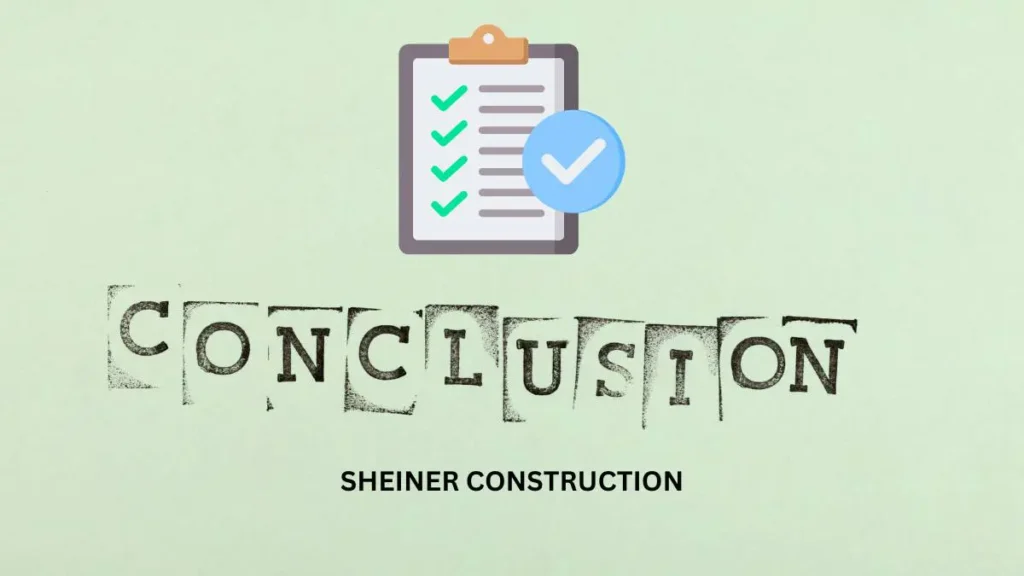
it’s essential to have a clear understanding of the requirements and potential setbacks involved to ensure a successful project.
By taking the time to familiarize yourself with the regulations, setbacks, and seeking professional guidance, you can navigate the ADU process with confidence.
A small recap for ADU setbacks in San Diego
To recap, here are the key steps and considerations to keep in mind as you embark on your ADU journey in San Diego:
- Research the Local Regulations: Start by delving into the details of the city’s Municipal Code. Understanding the specific regulations and requirements for ADUs in San Diego is crucial. This knowledge will serve as the foundation for your project and help you make informed decisions.
- Explore Setback Requirements: Take the time to understand the setback requirements for your property’s zoning. Setbacks play a significant role in the design and placement of your ADU. Working with professionals who specialize in ADU projects in San Diego will provide valuable guidance and ensure compliance with setback limitations.
- Consult with ADU Professionals: Engage the services of architects, designers, and contractors who have experience with ADU projects in San Diego. Their expertise will be invaluable in navigating the design and construction process. They can help you optimize your ADU’s layout, address setback requirements, and ensure compliance with all necessary regulations.
- Consider Variance Options: In some cases, you may find that your ADU design doesn’t perfectly align with setback requirements. If this is the case, exploring variance options could be a potential solution. Seeking variances requires approval from the appropriate authorities, so consulting with professionals is essential in this process.
- Open Communication with Neighbors: Engaging in open and transparent communication with your neighbors can help address any concerns they may have. By explaining the benefits of your ADU project and addressing their questions or reservations, you can foster a positive relationship and seek their support.
Building an ADU in San Diego is an exciting endeavor that can enhance the value and functionality of your property.
With careful planning, adherence to regulations, and the support of professionals, you can successfully navigate the ADU process and unlock the many benefits it offers.
You can also read our ADU checklist in San Diego, and have a full overview.
I wish you the best of luck with your ADU project in San Diego.
Don’t hesitate to reach out to our team or the professionals you choose to work with for guidance and support throughout the journey.
Enjoy the process and the incredible possibilities that an ADU can bring to your property!
![SHEINER CONSTRUCTION – [#1] WHOLE HOUSE REMODELING IN SAN DIEGO & ADU BUILDER](https://sheinerconstruction.com/wp-content/uploads/2024/04/Sheiner-Construction-San-Diego-LOGO.png)
